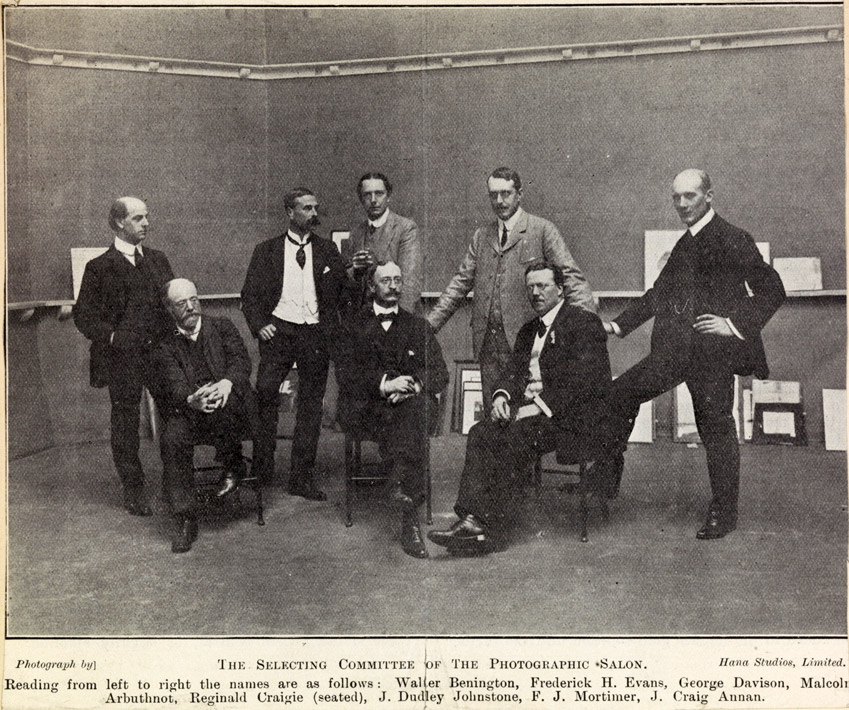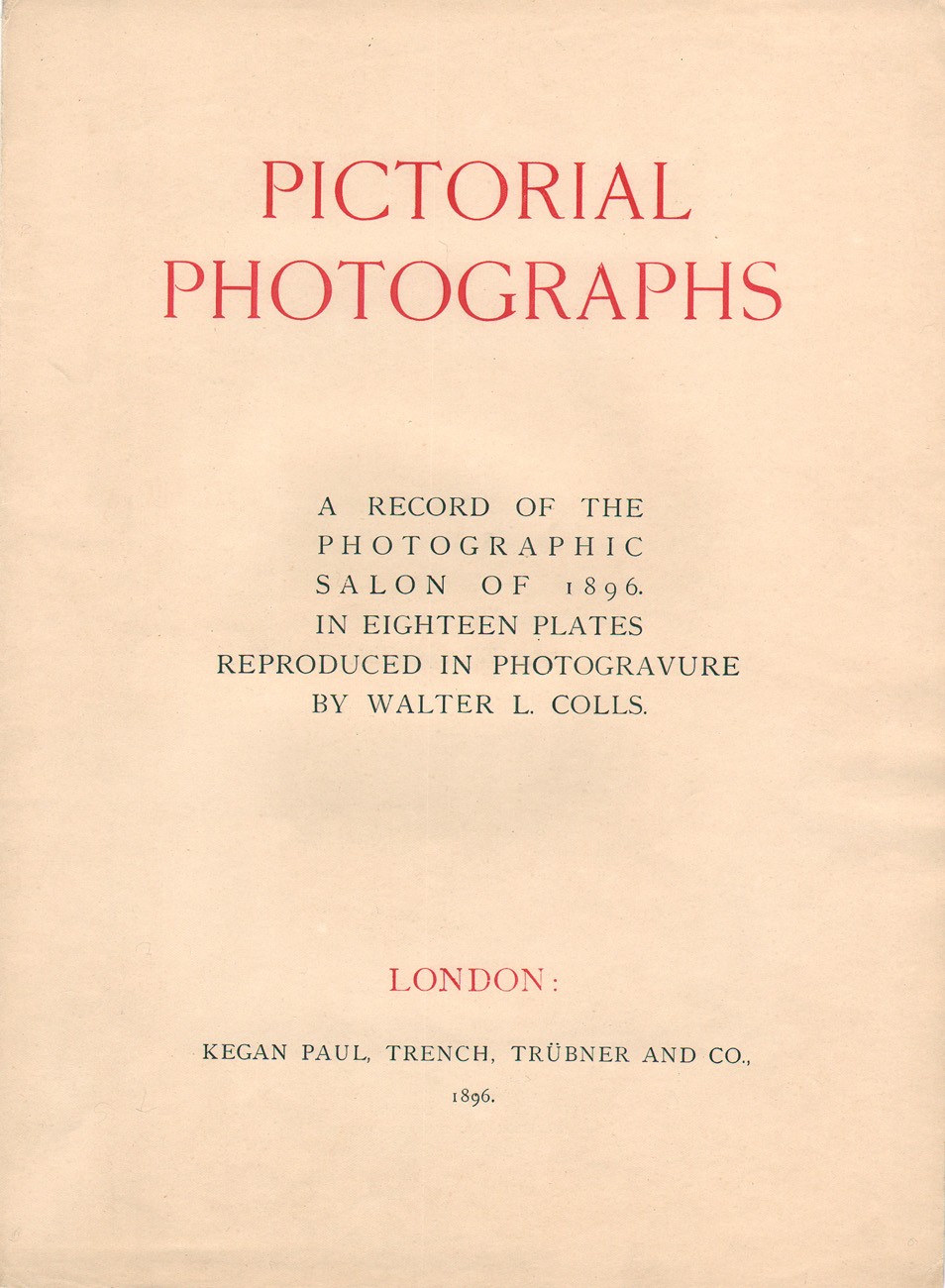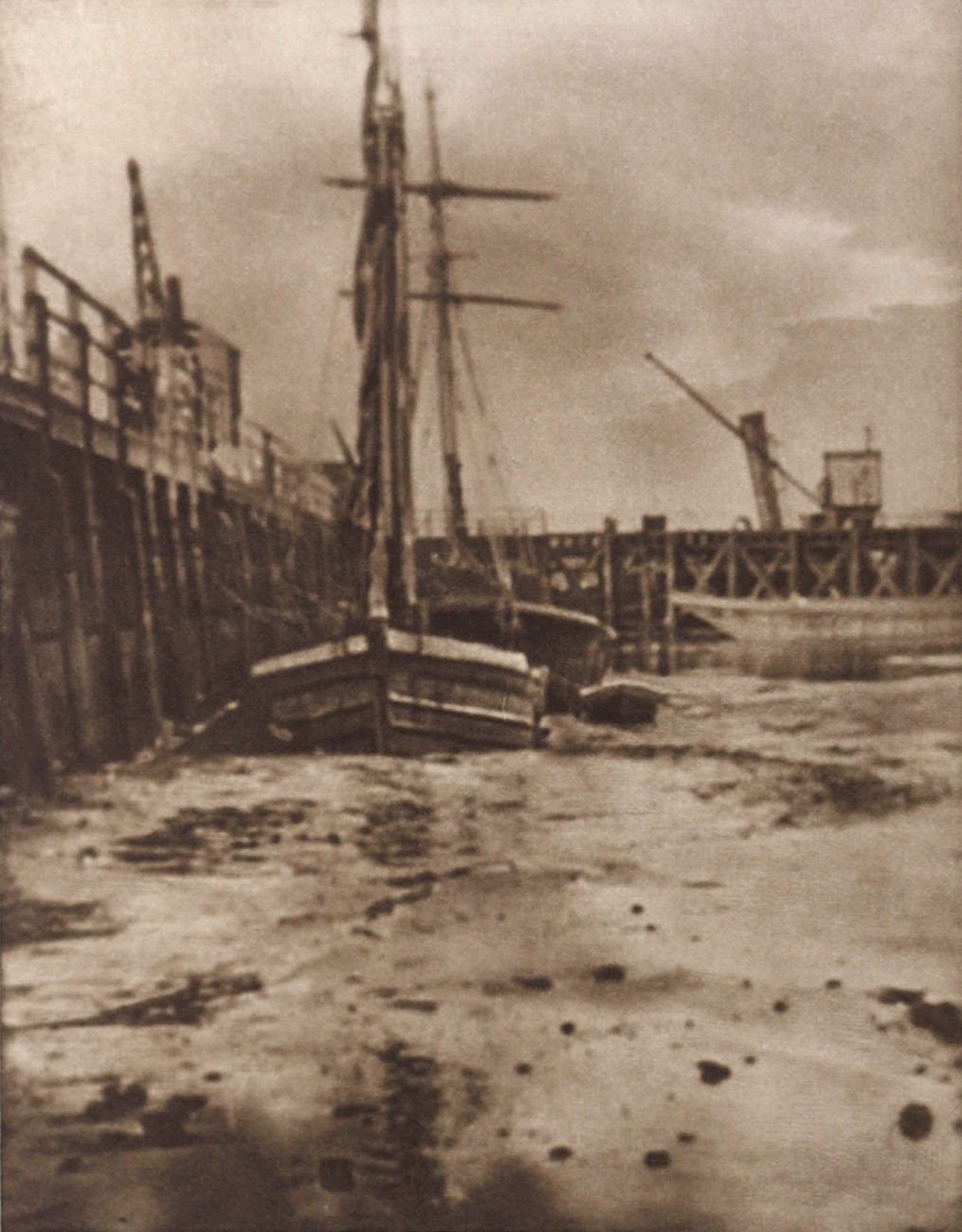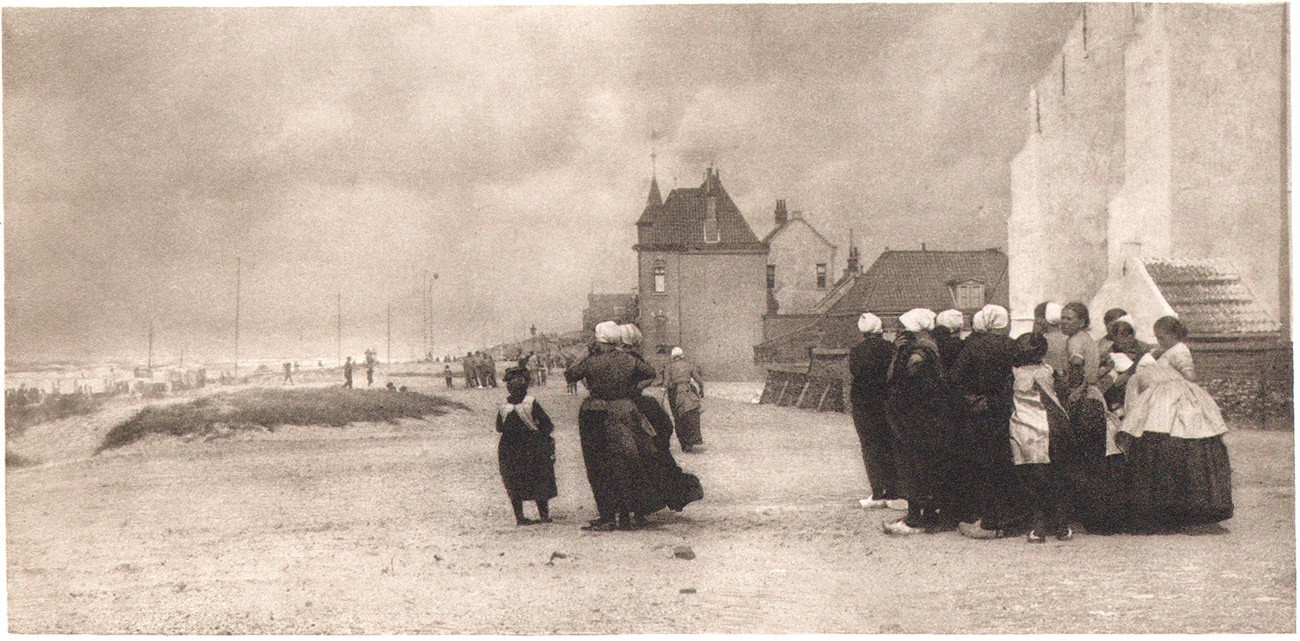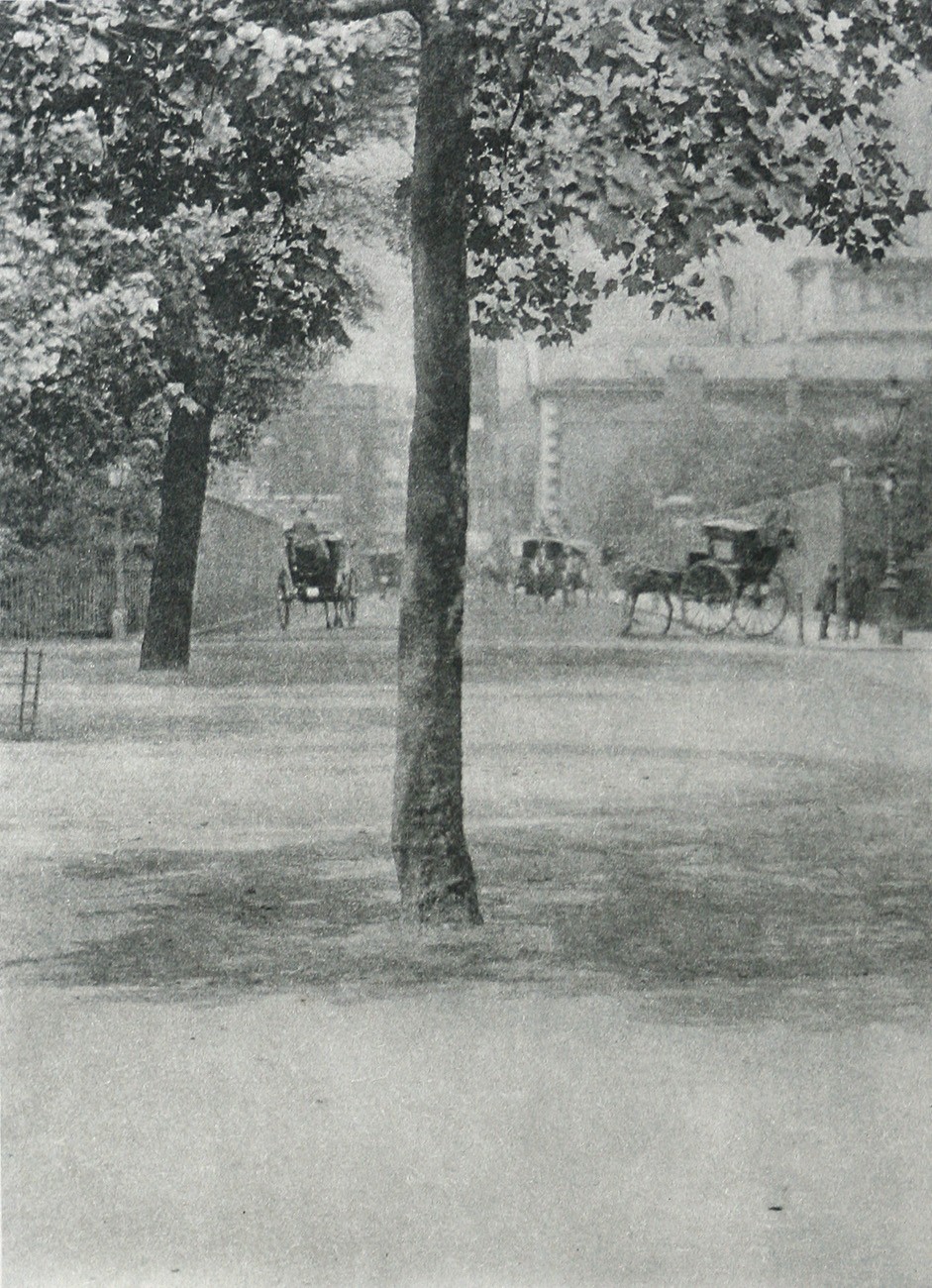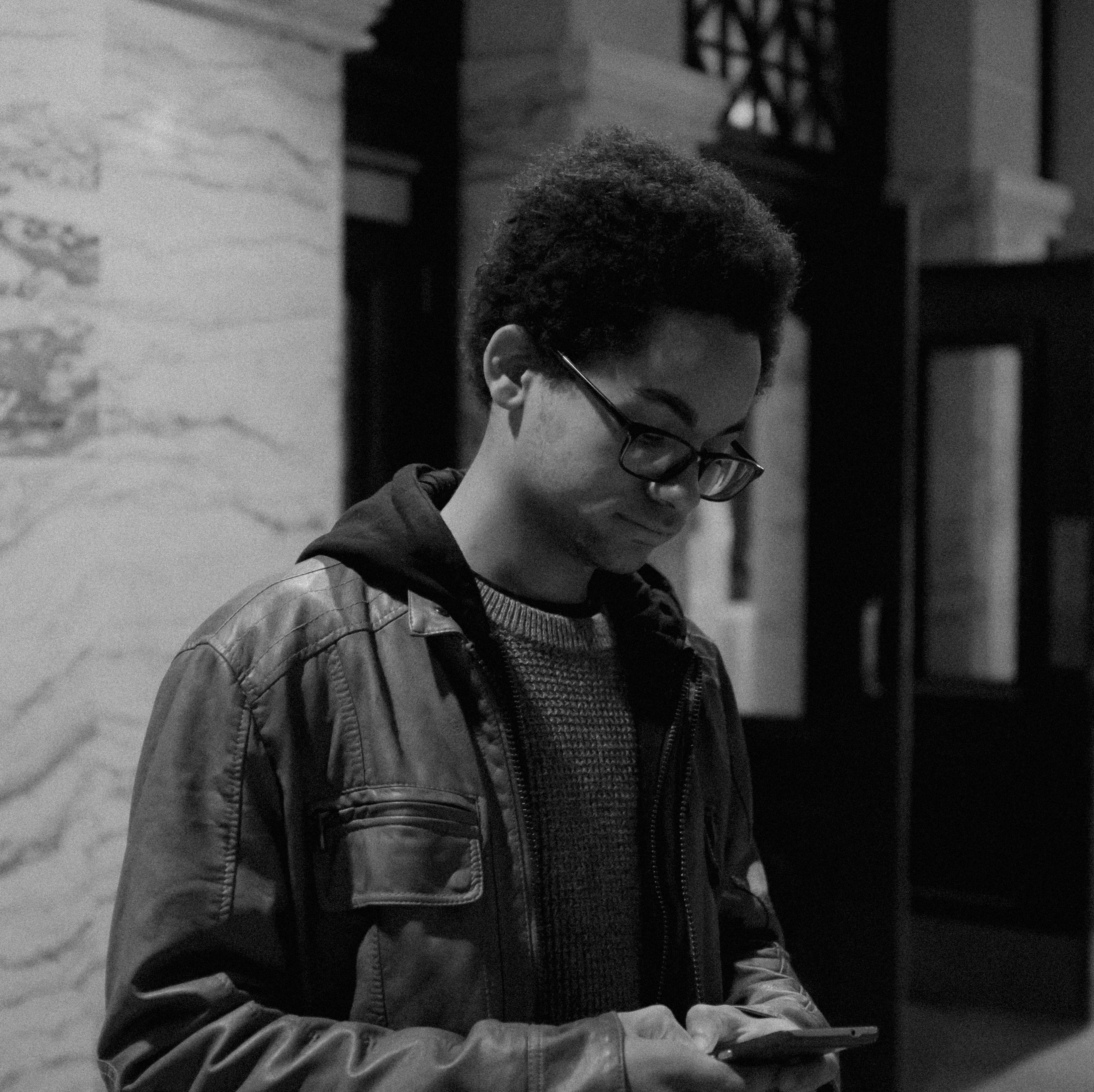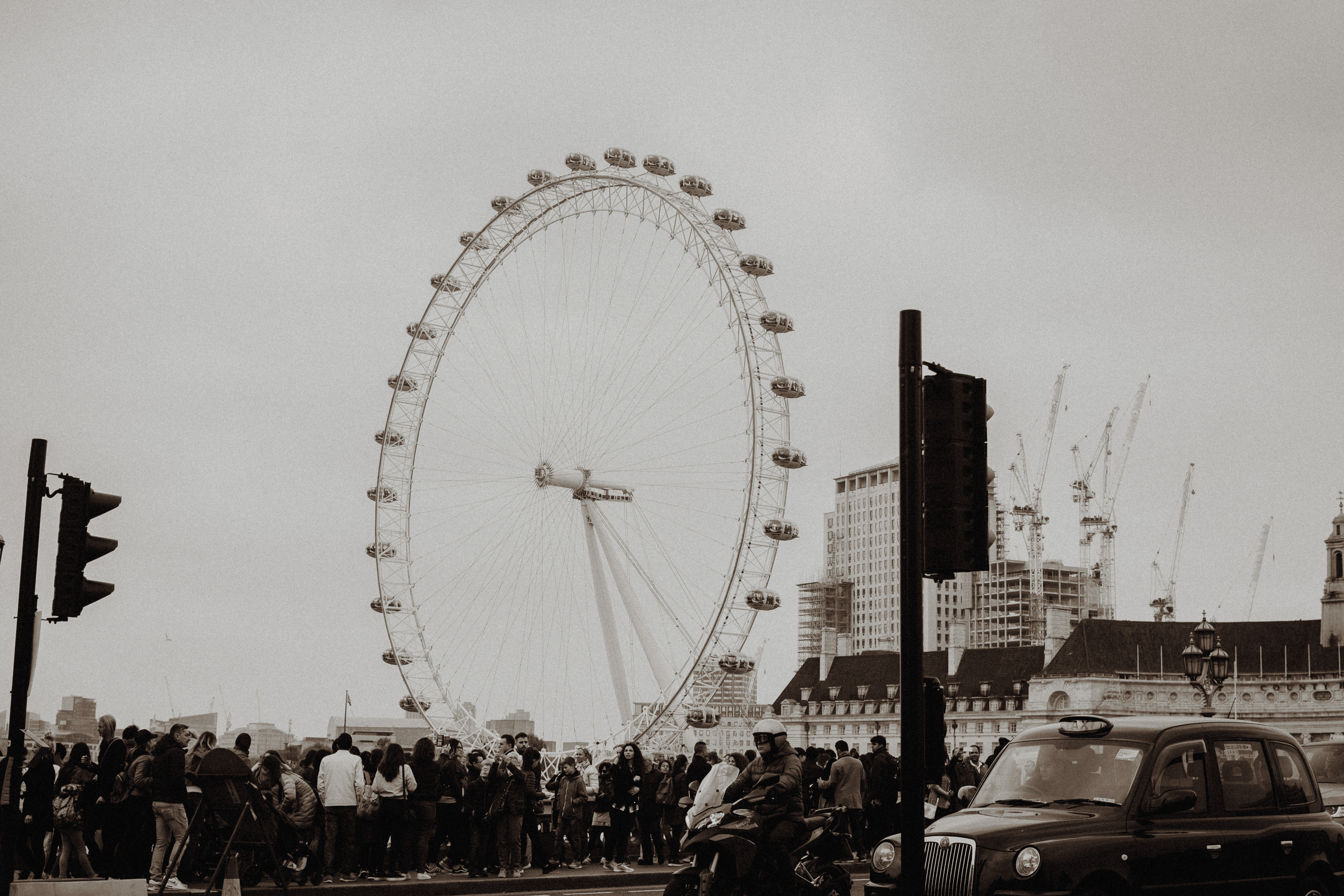Difference between revisions of "Photography & The Linked Ring"
From Londonhua WIKI
| Line 51: | Line 51: | ||
<br><br> | <br><br> | ||
===Alfred Stieglitz=== | ===Alfred Stieglitz=== | ||
| + | {{Infobox | ||
| + | |title = Alfred Stieglitz Portrait | ||
| + | |bodystyle = width:25em | ||
| + | |image = [[File: profilepicture.jpg|x350px|right|frameless|thumb|Jacob Dupuis]] | ||
| + | |label2 = '''For the MET Gallery''' | ||
| + | |data2 = Taken in 1915 | ||
| + | }} | ||
The founder of Photo-Secession and one of the first Americans in the Linked Ring, Alfred Stieglitz was an important figure in the history of modern photography. Stieglitz conceptualized the idea of photography being an art form, and helped to bring the concepts of modern art to the creatives in America.<ref> (2017). "Alfred Stieglitz - Victoria and Albert Museum. (2017). Vam.ac.uk.</ref> | The founder of Photo-Secession and one of the first Americans in the Linked Ring, Alfred Stieglitz was an important figure in the history of modern photography. Stieglitz conceptualized the idea of photography being an art form, and helped to bring the concepts of modern art to the creatives in America.<ref> (2017). "Alfred Stieglitz - Victoria and Albert Museum. (2017). Vam.ac.uk.</ref> | ||
Several series of notable works from his career include ''Equivalents'', Low Light Experiments and his images of the human body. For each of these, he always used the latest technologies available, and developed his own methods of applying them. In the case of ''Equivalents'', Stieglitz focuses on the new development of panchromatic emulation which allowed for the camera to capture all visible wavelengths of light in the monochrome image. <ref>Stieglitz, A. (1926). "Equivalent Collection." New York: The Metropolitan Museum of Art Database."</ref> ''Equivalents'' focuses on clouds, with no other references as to location as the camera is always pointed directly at the sky. ''Equivalents'' has been widely considered as the first recognized series of of abstract photography, with the intention of viewers to interpret it how they please. The images that Stieglitz created of human bodies are his largest and most valued collection today. They almost exclusively feature his wife, artist Georgia O’Keefe, and focus on movement and details as opposed to traditional portrait compositions. Stieglitz would take these on platinum and palladium plates, and inevitably experimental silver plates that would provide sharper contrast in the colors.<ref> Rabinowitz, P. (2015). "KAHLO AND O’KEEFFE: PORTRAIT OF THE ARTIST AS FASHION ICON." JSTOR., Extravagances: Habits of Being 4 (pp. 166-194). University of Minnesota Press.</ref> The [[Victoria and Albert Museum]] features a large collection of these images in partnership with the Georgia O’Keefe Foundation. | Several series of notable works from his career include ''Equivalents'', Low Light Experiments and his images of the human body. For each of these, he always used the latest technologies available, and developed his own methods of applying them. In the case of ''Equivalents'', Stieglitz focuses on the new development of panchromatic emulation which allowed for the camera to capture all visible wavelengths of light in the monochrome image. <ref>Stieglitz, A. (1926). "Equivalent Collection." New York: The Metropolitan Museum of Art Database."</ref> ''Equivalents'' focuses on clouds, with no other references as to location as the camera is always pointed directly at the sky. ''Equivalents'' has been widely considered as the first recognized series of of abstract photography, with the intention of viewers to interpret it how they please. The images that Stieglitz created of human bodies are his largest and most valued collection today. They almost exclusively feature his wife, artist Georgia O’Keefe, and focus on movement and details as opposed to traditional portrait compositions. Stieglitz would take these on platinum and palladium plates, and inevitably experimental silver plates that would provide sharper contrast in the colors.<ref> Rabinowitz, P. (2015). "KAHLO AND O’KEEFFE: PORTRAIT OF THE ARTIST AS FASHION ICON." JSTOR., Extravagances: Habits of Being 4 (pp. 166-194). University of Minnesota Press.</ref> The [[Victoria and Albert Museum]] features a large collection of these images in partnership with the Georgia O’Keefe Foundation. | ||
Revision as of 15:15, 17 June 2017
Photography as Art and Science in London
by Jacob Dupuis
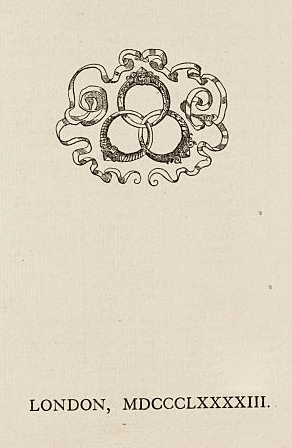 The Linked Ring logo, 1893 |
Contents
Abstract
This project was created with the goals of allowing me to explore the history of photography in London, while allowing me to further my experience of taking photos. While I have not taken classes on photography, I've had experience shooting events and for hire, and am constantly trying to learn as much as I can. Being in London where a lot of modern photography was developed means that there were a lot of resources in the city to help me develop the project as well as my photography skills. This milestone looked at Photography in the end of the 19th century in London and America. The background explores the Linked Ring group and Photo-Secession movement, and how photography moved from just being a science to being an artistic field that utilizes science to further the technical aspects of the craft.
Introduction
This project looked at the historical development of Photography in London and applies some of those principles to photographs that I created here in the city. It provides a summary of how modern photography came to bloom in London, and how it influenced developing techniques in today's digital photography world. The works of the Linked Ring are often studied in a historical or practical way, but my project combined both with modern techniques. Instead of focusing on the experiments or technology of the time period, the project looked at how the styles can be adapted to use with modern cameras. The background of the project contains information about what led up to this shift of how photography was viewed by society as the 20th century began.
Section 1: Background
The Linked Ring
| Founding Committee Members | Date Unknown |
|---|---|
At the start of the 1890s, several photographers grew unhappy with the way that the Royal Photographic Society and its members were looking down upon those who wanted to try new techniques and capture photographs that different from the traditional portraits and landscapes that were being produced. George Davison, Henry Robinson and Henry Van der Weyde decided to then form a club that would support photographers who wanted to experiment with new techniques and promote the fine art aspects of photography as well. This movement became widespread in Europe and the U.S., with groups such as the Vienna Camera Club, Photo-Club de Paris and Photo-Session following en suite. The group grew to 114 Links (as the members were known) and would eventually open invitations to American photographers.[1] In order to receive an invitation, Photographers must have a deep understanding of every aspect of the art form, from the chemical development processes to optical and mechanical skills. Alfred Stieglitz, an American Link, would go on to say “a photograph is not artistic if it is technically perfect, but pictorially rotten.” (quote) This quote reflects that the Links not only strived for the technical knowledge, but for a creative angle of their works as well. [2]
Members
Members of the Linked Ring would go on to develop new photography techniques such as efficient daguerreotype, platinum and palladium toning, artificial lighting in images, carbon-printing, image manipulation, depth of field and low light images.[3] While it was known as a brotherhood, the group would have 4 woman photographers as active members and one holding a leadership role for sometime. All of its members contributed siginfically to photography history. Primarily members were from England, but membership opened up to Americans eventually.[4] The Brotherhood would then vote on disbanding the organization as it felt that too much American influence was occurring. This would lead to the fame and rise of Alfred Stieglitz and the Photo-Secession movement, as he continued to pursue it. [5]
Photographic Salon
The Photographic Salon was created as a way to showcase the works of the Links for the mass public in London to enjoy. The theme of every photography Salon was just three words: difference of opinion. This further echoed the motivation behind the group entirely.[6] Occurring several times a year, the members of the Linked Ring would vote on prints or plates to be displayed in the collection. The Photographic Salon was also one of the first recorded displays of photographs spaced out at eye level, as opposed to filling an entire wall with images.[7] Below are images that were displayed in the 1896 Salon. [8]
Pictorial Photography
Photo-Secession
Around the early years of the Linked Ring, a companion (and later member) of the group named Alfred Stieglitz based in New York City who shared similar ideas. Stieglitz would go on to form the Photo-Secession group after being scorned for his choices for a gallery display for the National Arts Club. The movement became a step away from traditional art methods and styles and opened the door in American photography for Avant-garde works that were starting to become popular in Europe at the time.[9]
Alfred Stieglitz
| For the MET Gallery | Taken in 1915 |
|---|---|
The founder of Photo-Secession and one of the first Americans in the Linked Ring, Alfred Stieglitz was an important figure in the history of modern photography. Stieglitz conceptualized the idea of photography being an art form, and helped to bring the concepts of modern art to the creatives in America.[10]
Several series of notable works from his career include Equivalents, Low Light Experiments and his images of the human body. For each of these, he always used the latest technologies available, and developed his own methods of applying them. In the case of Equivalents, Stieglitz focuses on the new development of panchromatic emulation which allowed for the camera to capture all visible wavelengths of light in the monochrome image. [11] Equivalents focuses on clouds, with no other references as to location as the camera is always pointed directly at the sky. Equivalents has been widely considered as the first recognized series of of abstract photography, with the intention of viewers to interpret it how they please. The images that Stieglitz created of human bodies are his largest and most valued collection today. They almost exclusively feature his wife, artist Georgia O’Keefe, and focus on movement and details as opposed to traditional portrait compositions. Stieglitz would take these on platinum and palladium plates, and inevitably experimental silver plates that would provide sharper contrast in the colors.[12] The Victoria and Albert Museum features a large collection of these images in partnership with the Georgia O’Keefe Foundation.
Camera Notes
Stieglitz had been publishing works and journals on ideas, and concerns about the state of the photography on behalf of the Camera Club of New York from 1897 until the turn of the century. When the club was originally formed, Stieglitz declined the role of president, as he felt he had more power and influence while being in charge of the club’s magazine.[13] The periodical was entitled Camera Notes, and often faced criticism as Stieglitz frequently called on photographers to embrace new concepts and styles such as pictorial photography. Stieglitz felt that the Linked Ring was missing out on a chance to spread its concepts, and having control over Camera Notes allowed him to spread the ideas behind Photo-Secession in a way that Linked Ring never was able to. When he formed the Photo-Secession, he resigned from Camera Notes, but due to his name recognition was able to start Camera Work, which became a huge success, selling equal to Camera Notes previously had. This platform allowed the Photo-Secession to become widespread before even opening a physical gallery, which they would not do until 3 years later.[14]
Alfred Stieglitz Statements & Gallery
Stieglitz published often, writing essays on the state of photography, his identity as an artist, and the world itself. Most of these works or his quotes are still famously quoted, such as this one published in a periodical magazine where Stieglitz shares his thoughts on pictorial photography: The point is, what you have to say and how to say it. The originality of a work of art refers to the originality of the thing expressed and the way it is expressed, whether it be in poetry, photography, or painting. That one technique is more difficult than another to learn no one will deny; but the greatest thoughts have been expressed by means of the simplest technique, writing.[15] The most famous words by Stieglitz can be found below along with a gallery of his works. The Alfred Stieglitz statement is a declaration that he would often list with his gallery displays.
I was born in Hoboken. I am an American. Photography my passion, the search for truth, my obsession. – Alfred Stieglitz, 1920 Statement[16]
Results
Pictorialism was a core principle of the group and its movement, as Stieglitz and other photographers wanted to be able to showcase their private experiments and manipulations of traditional techniques, because they felt their results were truly spectacular and new. In both Photo-Secession and the works of the Linked Ring, new styles and technical advancements came to be. Image manipulation, cropping and color adjusting started to become widely used in order to provide new looks at previously seen subjects.[17] Technical procedures such as film developing, tintypes and coloring were not the only things to change however. Content of photography shifted away from traditional portraits and landscapes to include geometric, abstract designs and everyday life. The beginnings of low light photography, and use of lighting to alter a scene also came about during the rise of pictorialism. Pictorialism provided photographers the same unique control and personality in their images as painters previously had.[18]
Showcasing Photography as a Science
London Street Photography
For my deliverable I decided to create 4-5 images that reflect photography elements that members of the Linked Ring used or created here in London.
Images
Conclusion
In this section, provide a summary or recap of your work, as well as potential areas of further inquiry (for yourself, future students, or other researchers).
References
Add a references section; consult the Help page for details about inserting citations in this page.
- ↑ Harker, M. (1979) “The Linked Ring: The Secession Movement in Photography in Britain.” London: Heinemann. Pp. 17.
- ↑ Taylor, J. (1984) “The Salon de Refuses of 1908.” 8/4 London: History of Photography. Pp 277.
- ↑ Hannavy, J. (2008) “Encyclopedia of 19th Century Photography.” New York: Routledge. Pp 221.
- ↑ Harker, M. (1979) “The Linked Ring: The Secession Movement in Photography in Britain.” London: Heinemann. Pp. 11.
- ↑ Harker, M. (1979) “The Linked Ring: The Secession Movement in Photography in Britain.” London: Heinemann. Pp. 18.
- ↑ Mortimer, F.J (1919) “Photograms of the Year.” London: Iliffe and Sons. pp 44.
- ↑ Hannavy, J. (2008) “Encyclopedia of 19th Century Photography.” New York: Routledge. Pp 221.
- ↑ The Linked Ring (1896) “Pictorial Photographs” London: Kegan Paul, Trench Trubner and Co. (The London Salon of Photography 2017)
- ↑ Stieglitz, A., Ross, C. (1942). "The Origin of the Photo-Secession and How It Became 291". New York: Stieglitz., pp. 8-9.
- ↑ (2017). "Alfred Stieglitz - Victoria and Albert Museum. (2017). Vam.ac.uk.
- ↑ Stieglitz, A. (1926). "Equivalent Collection." New York: The Metropolitan Museum of Art Database."
- ↑ Rabinowitz, P. (2015). "KAHLO AND O’KEEFFE: PORTRAIT OF THE ARTIST AS FASHION ICON." JSTOR., Extravagances: Habits of Being 4 (pp. 166-194). University of Minnesota Press.
- ↑ Bunnell, P. (1979). "The Print Collector's Letter, 10(4)." JSTOR. pp.133
- ↑ Bunnell, P. (1979). "The Print Collector's Letter, 10(4)." JSTOR. pp.134
- ↑ Stieglitz, A. (1899) "On Pictorial Photography." New York: Scribner's Magazine. pp. 528-
- ↑ Whelan, R. (1995) "Alfred Stieglitz: A Biography" New York: Little Brown. pp 11
- ↑ Nickel, D. (1992). "Autochromes by Clarence H. White." Record of the Art Museum, Princeton University, 51(2), pp. 31-37
- ↑ Bunnell, P. (1992). "Pictorial Photography." Record of the Art Museum, Princeton University, 51(2), pp. 11
